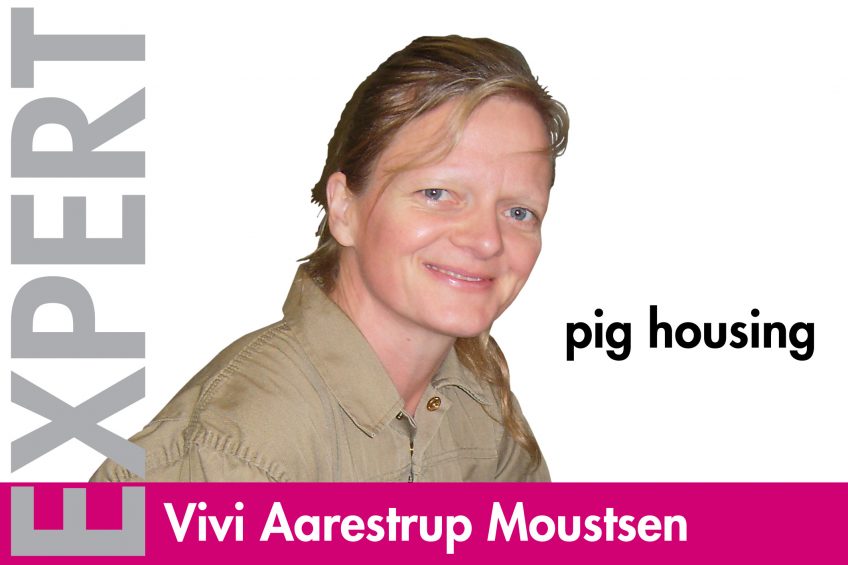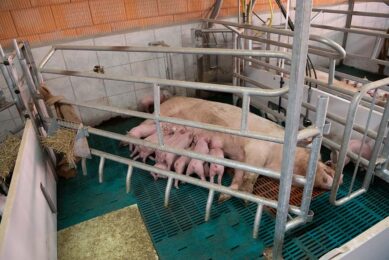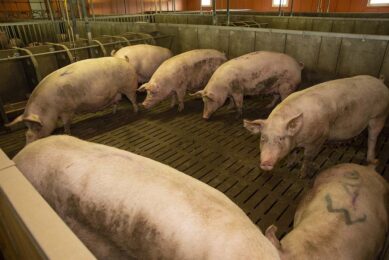Some sows are better mothers than others

Neonatal piglet mortality is a challenge for all sow holders – but for some more than others. There is no doubt that especially for loose housing of lactating sows very good mothers are required. Vivi Aarestrup Moustsen, housing & welfare expert asks how do you recognise them?
It is in the interest of pig producers as well as pig welfare to reduce neonatal mortality. So how come it remains so high? This happens especially in our Danish systems with loose housing for farrowing and lactating sows – where in theory we aim for an even higher focus on animal welfare.
Analysis of data from 3 Danish herds that had both sections with farrowing crates and sections with pens for loose farrowing sows showed that piglet mortality before litter equalisation and piglet mortality after litter equalisation was higher for loose sows than for confined sows. The analysis also showed that a proportion of the loose sows delivered results comparable to those farrowing in crates.
Good mothers – can they be identified?
The question is: can we identify the good mothers? Or can we identify the bad mothers and then address them or pay extra attention to them before they crush their piglets. So we have had a ‘closer’ look on data from our trials with loose or temporary confined sows. This has included analysis of a number of characteristics of the sows and evaluated the potential impact of these characteristics on piglet mortality.
Litter size
One characteristic being litter size, where we found that piglet mortality until litter equalisation was similar for all litters until the litter size reached 16-17 piglets total born. Then mortality appeared to increase, more so for loose sows than for confined sows.
Week day of farrowing
There was no difference between week day of farrowing with the proportion of litters with high mortality being similar for all week days. So no difference if the sows farrowed on days with fewer farrowings and may be less other litters for equalisation – or on days with many farrowings and the personnel being busy.
Farrowing duration
Loose housed sows that had short farrowings (less than 5 hours from birth of first piglet to the birth of last piglet) had fewer stillborn piglets compared to confined sows with short farrowings. For sows with farrowings lasting more than 5 hours, the number of stillborn remained at the same level for sows that were confined but increased for sows that were loose housed.
Posture changes and pre-lying behaviour
A prerequisite for sows to crush piglets is that the sows are moving. Therefore the level of posture changes from birth of last piglet to litter equalisation was analysed. There was no difference in the number of posture changes for sows with a high versus sows with a low piglet mortality in this period. 1 reason being that in the first 24 hours post-farrowing, the sows are lying down nearly all time, sometimes for more than 55 minutes.
In addition, analysis of a limited data set showed no difference neither in the pre-laying behaviour for sows with high or low piglet mortality before litter equalisation.
Needle in the haystack?
Of the analysis performed on the Danish dataset, the only indicators of litters with increased neonatal mortality in the period until litter equalisation, were sows giving birth to more than 17-18 piglets and/or sows of parity 3 or more. And if the sows were loose housed during farrowing, farrowings lasting more than 5 hours increased number of stillborn piglets.
Collaboration makes a difference
The question of good and bad mothers is an issue across countries. The analysis mentioned above primarily is a result of collaboration between CPH Pig from the University of Copenhagen and SEGES Pig Research Centre – and they serve as input to international collaboration in regard to identifying good sows – with for instance the partners in the UK project Freesow.











